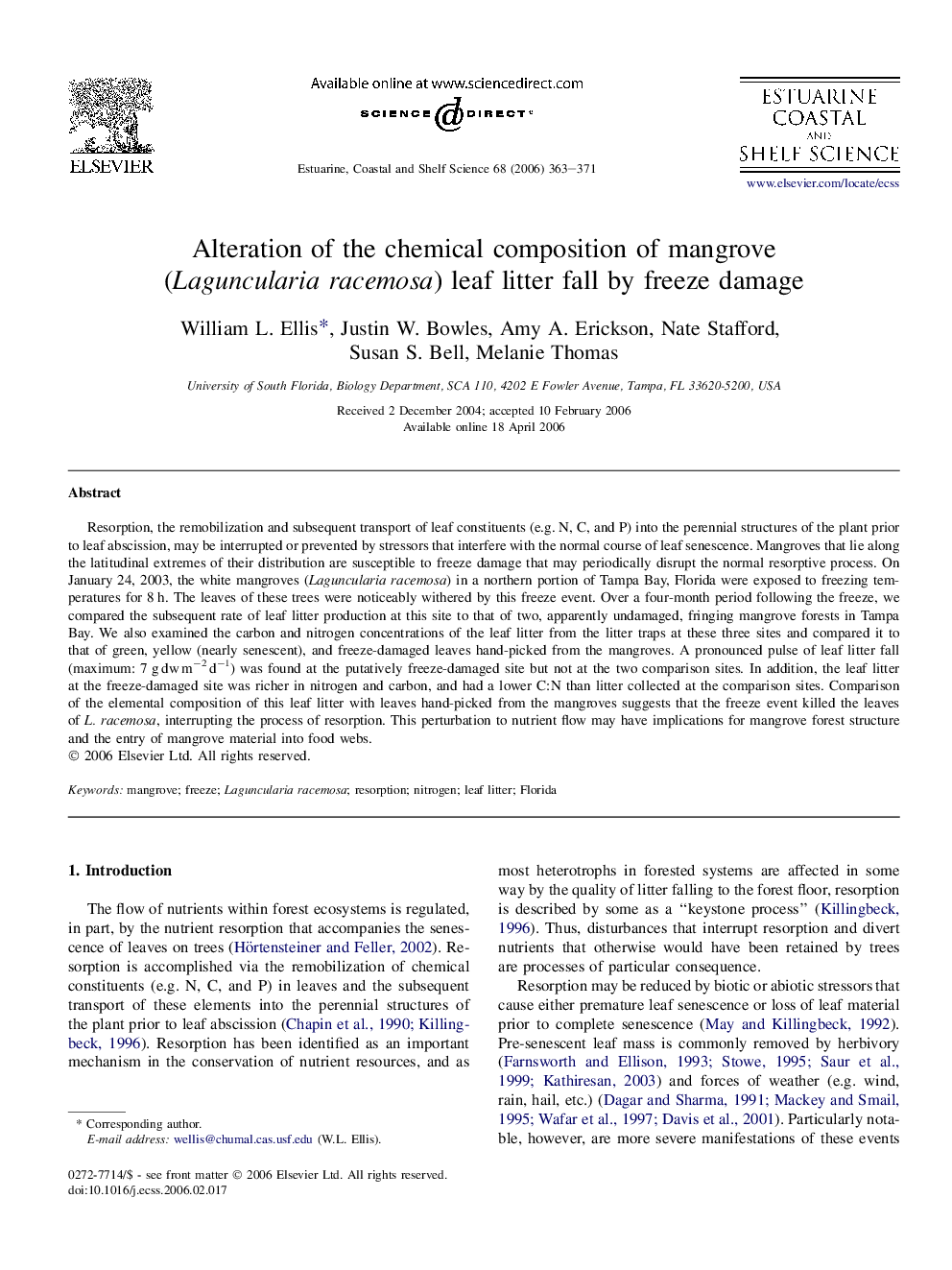| Article ID | Journal | Published Year | Pages | File Type |
|---|---|---|---|---|
| 4542311 | Estuarine, Coastal and Shelf Science | 2006 | 9 Pages |
Resorption, the remobilization and subsequent transport of leaf constituents (e.g. N, C, and P) into the perennial structures of the plant prior to leaf abscission, may be interrupted or prevented by stressors that interfere with the normal course of leaf senescence. Mangroves that lie along the latitudinal extremes of their distribution are susceptible to freeze damage that may periodically disrupt the normal resorptive process. On January 24, 2003, the white mangroves (Laguncularia racemosa) in a northern portion of Tampa Bay, Florida were exposed to freezing temperatures for 8 h. The leaves of these trees were noticeably withered by this freeze event. Over a four-month period following the freeze, we compared the subsequent rate of leaf litter production at this site to that of two, apparently undamaged, fringing mangrove forests in Tampa Bay. We also examined the carbon and nitrogen concentrations of the leaf litter from the litter traps at these three sites and compared it to that of green, yellow (nearly senescent), and freeze-damaged leaves hand-picked from the mangroves. A pronounced pulse of leaf litter fall (maximum: 7 g dw m−2 d−1) was found at the putatively freeze-damaged site but not at the two comparison sites. In addition, the leaf litter at the freeze-damaged site was richer in nitrogen and carbon, and had a lower C:N than litter collected at the comparison sites. Comparison of the elemental composition of this leaf litter with leaves hand-picked from the mangroves suggests that the freeze event killed the leaves of L. racemosa, interrupting the process of resorption. This perturbation to nutrient flow may have implications for mangrove forest structure and the entry of mangrove material into food webs.
